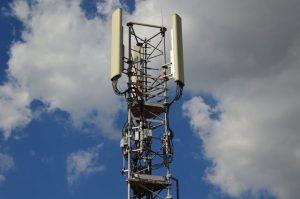
The Satellite Revolution: How New Networks are Reshaping Telecommunications. The satellite revolution is transforming the telecommunications industry with new networks and technologies, enabling faster and more reliable connectivity worldwide. This revolution is driven by advancements in satellite technology, including the development of low-Earth orbit (LEO) satellites, high-throughput satellites (HTS), and phased array antennas.
One of the key players in the satellite revolution is SpaceX, which has launched numerous LEO satellites as part of its Starlink constellation. These satellites are designed to provide high-speed, low-latency internet connectivity to remote and underserved areas, and have the potential to revolutionize the way we communicate and access information. Other companies, such as OneWeb and Amazon’s Kuiper Systems, are also developing their own LEO satellite constellations, further expanding the reach and capabilities of satellite-based telecommunications.
Advantages of Satellite-Based Telecommunications
Satellite-based telecommunications offer several advantages over traditional fiber-based networks, including greater flexibility, scalability, and reach. Satellites can provide connectivity to areas where it is difficult or expensive to deploy fiber optic cables, such as remote or rural areas, and can also offer backup connectivity in case of fiber outages. Additionally, satellite-based telecommunications can provide high-speed connectivity to moving vehicles, such as airplanes, ships, and cars, enabling new applications and services such as in-flight internet and connected vehicles.
Challenges and Limitations
Despite the many advantages of satellite-based telecommunications, there are also challenges and limitations to consider. One of the main challenges is latency, which can be higher for satellite-based connections compared to fiber-based connections. This can make it difficult to support real-time applications such as video conferencing and online gaming. Another challenge is interference, which can occur when multiple satellites are operating in the same frequency band. This can lead to signal degradation and loss of connectivity.
Future Developments and Applications
As the satellite revolution continues to evolve, we can expect to see new developments and applications emerge. One area of focus is the integration of satellite-based telecommunications with other technologies, such as 5G and the Internet of Things (IoT). This could enable new use cases such as smart cities, industrial automation, and autonomous vehicles. Another area of focus is the development of new satellite technologies, such as quantum satellites and satellite-based cybersecurity systems. These technologies have the potential to further enhance the security and reliability of satellite-based telecommunications, and could play a critical role in supporting emerging applications and services.


